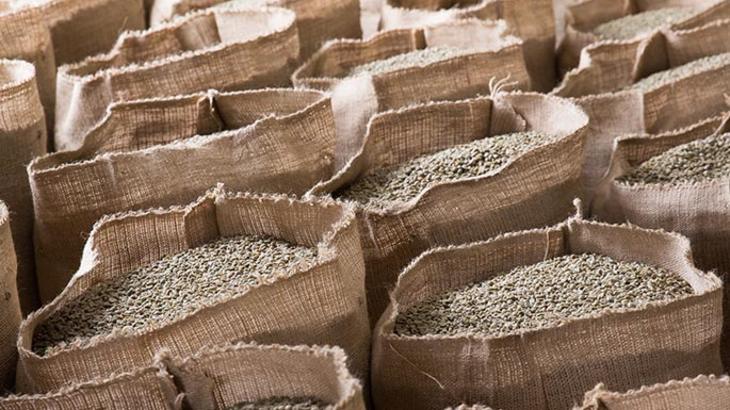Innovate the traditional coffee bean trade! Direct sales of Coffee Exchange origin should get rid of middlemen!

Professional coffee knowledge exchange more coffee bean information please follow the coffee workshop (Wechat official account cafe_style)
(original title: connecting coffee farmers and roasters, e-commerce platform Coffee Exchange to revolutionize traditional coffee bean trade)
"Life begins after coffee."
A standard cup of Expresso requires about 50 coffee beans, which determine the expressiveness of coffee.
In China's trillion-dollar coffee market, although new species such as Luckin and Lian Coffee have emerged, the trading process of these beans is not much different from that of a decade ago. From their origins in Africa, Latin America and South-East Asia, to being eventually integrated into the water and handed over to customers, coffee beans need to change hands in many ways: farmers, middlemen, exporters, importers, distributors, roasters and coffee shops.
Coffee Exchange, recently contacted by 36 Krypton, hopes to use the B2B e-commerce platform to remove many intermediate links in the coffee trade and improve the efficiency of the transaction process.
Coffee Exchange was founded in August 2018. Roasters can select coffee beans provided by coffee farmers from different places directly on the Coffee Exchange platform. At present, the company is mainly aimed at roasters and boutique coffee shops. Lewis Harding, the founder of the company, said that in the traditional trade process, a large amount of profits are drawn from the intermediate links, and the options offered by dealers to bakers are also quite limited. Buying directly from the country of origin is too expensive for bakers with little demand.
In order to provide more options, Coffee Exchange brings together coffee farmers on the platform through local partners in the major coffee-producing countries. Coffee Exchange currently provides coffee beans from coffee farmers in Ecuador, Panama, Colombia, Rwanda, Kenya and Peru. Users can request samples and place orders on Mini Program, and the company makes money by charging the buyer a service fee. The company says the coffee beans on its platform are, on average, 20-30% cheaper than those in traditional trade.
In addition to price, quality is also the focus of bakers. According to Lewis, the coffee bean trading industry has not been well transformed by the Internet, and many coffee farmers and traders are still working on paper, which leads to difficulties in tracking and tracing coffee beans. Some intermediaries sell new beans, old beans, good beans and secondary beans. To this end, Coffee Exchange will conduct quality inspection of coffee beans in the country of origin and place Internet of things chips in the coffee packaging to track geographical location, temperature, humidity, and so on.
After education in instant, canned, Starbucks and LuckIn, boutique coffee has become a choice for some people to pursue "upgrading". 36 Krypton has reported that according to statistics from market research firm QYR, the average growth rate of China's boutique coffee bean imports will reach 9.6% from 2014 to 2020. YuLimin, an analyst at Ore International, found that many small brands and independent coffee in China are on the rise, and the number of registrations has soared.
Coffee Exchange's current customers include boutique coffee brands such as Seesaw, Greybox, Fish Eye fisheye Coffee and Manner, as well as other independent roasters and coffee shops. Lewis observed that in China's Shanghai and Beijing, the development of boutique coffee shops has basically caught up with the level of London, and it is time to cut into service.
In addition to the Chinese market, Coffee Exchange also plans to enter South Korea, Australia and the United Kingdom, which are already developed in boutique coffee culture, in 2020.
There are other companies on the market that want to use technology to improve the efficiency of their coffee supply chain, including Algrano, a trading platform, and Cropster, which provides roasting tools and coffee trading information.
Coffee Exchange currently has a team of 5 people. Founder Lewis Harding has more than 10 years of financial background before working in the coffee industry for three years. CTO Eduardo Schettino has more than 15 years of experience in the field of supply chain and logistics technical construction and is a Brazilian who has worked in China for more than 10 years. Nicolas Velez, the company's partner in Latin America, has 17 years of experience in the Latin American coffee market. The company completed seed round financing from SOSV, China acceleration and Artesian VC last year.
END
Important Notice :
前街咖啡 FrontStreet Coffee has moved to new addredd:
FrontStreet Coffee Address: 315,Donghua East Road,GuangZhou
Tel:020 38364473
- Prev

Can I make instant coffee? Will the direct use of instant coffee have an impact on the body?
Professional coffee knowledge exchange more coffee bean information please pay attention to the coffee workshop (Wechat official account cafe_style) instant coffee can be boiled to drink, but also lose the meaning of instant coffee. Most of the above processing procedures for instant coffee have been completed in the coffee processing plant, where the coffee liquid is ground, boiled (filtered) after the deeply roasted coffee beans have been ground and boiled (filtered).
- Next

Chuanruixing Coffee will be listed in the United States at the beginning of May with a valuation of $3 billion at the earliest.
Professional coffee knowledge exchange more coffee bean information please follow the coffee workshop (Wechat official account cafe_style) according to Reuters quoted people familiar with the matter, once threatened to surpass Starbucks, China's first coffee shop Luckin Coffee (luckin coffee) has contacted the investment banks Credit Suisse, Goldman Sachs and Morgan Stanley, plans to list in the United States this year, the company is valued at about 30%
Related
- What brand of black coffee is the most authentic and delicious? what are the characteristics of the flavor of the authentic Rose Summer Black Coffee?
- Introduction to the principle and characteristics of the correct use of mocha pot A detailed course of mocha pot brewing coffee is described in five steps.
- Which is better, decaf or regular coffee? how is decaf made?
- How much is a bag of four cat coffee?
- How about four Cat Coffee or Nestle Coffee? why is it a cheap scam?
- Which is better, Yunnan four Cats Coffee or Nestle Coffee? How about cat coffee? is it a fake scam? why is it so cheap?
- How about Cat Coffee? what grade is a hoax? which instant coffee tastes better, four Cat Coffee, Nestle Coffee or G7 coffee?
- Process flow chart of coffee making-Starbucks coffee making process what coffee tastes good at Starbucks
- The top ten best coffee beans in the world Rose summer coffee or Tanzanian coffee tastes good
- Yunnan four cat coffee is good to drink?_four cat coffee is a big brand? four cat blue mountain coffee is fake?

